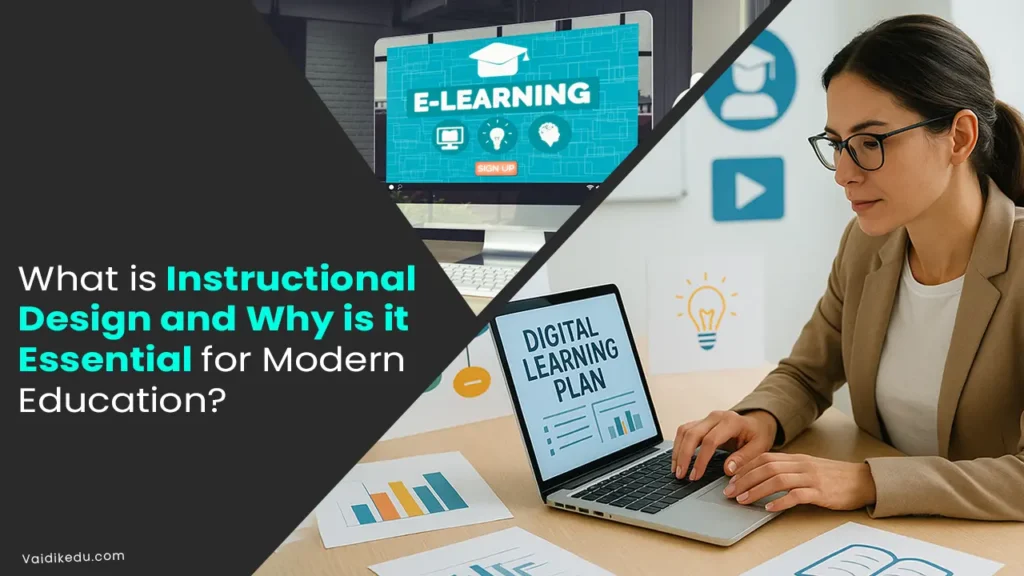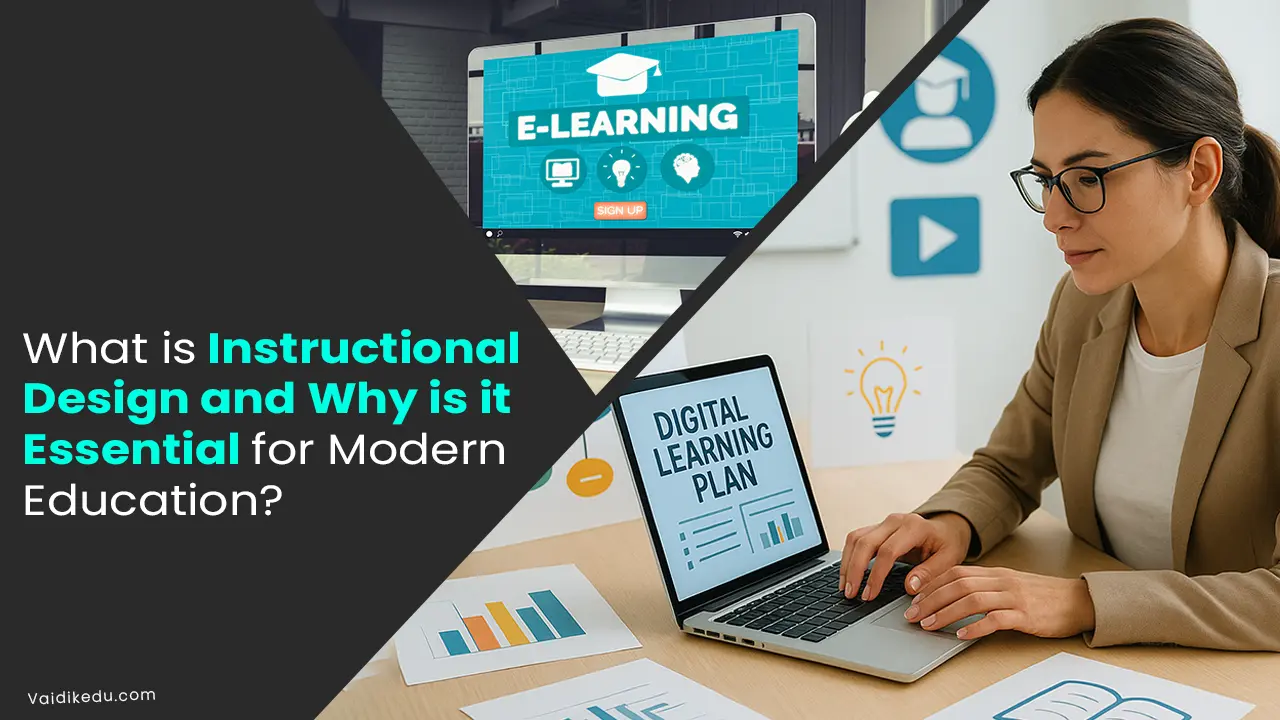Instructional Design is a structured approach to crafting educational experiences that foster efficient, effective, and engaging learning. It focuses on analyzing learners’ needs and systematically developing instructional materials and activities tailored to those needs.
At its core, instructional design involves a series of interconnected steps that guide the development of educational materials, ensuring they meet the specific needs of learners while achieving desired outcomes. These steps typically include analysis, design, development, implementation, and evaluation, forming a structured approach to problem-solving and content creation.
Each step builds upon the previous one, fostering a coherent and logical progression from identifying learning objectives to delivering and assessing instructional solutions. Whether applied in traditional classroom settings or digital learning environments, these steps ensure that instructional design remains focused, adaptable, and impactful.
By following these foundational steps, instructional designers create educational experiences that are both learner-centered and outcome-driven.
The ultimate goal is to create learning experiences that not only impart knowledge and skills but also inspire and motivate learners.
Building Blocks of Instructional Design
Instructional design is a series of interconnected steps that guide the development and implementation of instructional materials.
ADDIE is the overarching model that organizes the instructional design process.
It breaks the process into five key phases: Analysis, Design, Development, Implementation, and Evaluation. The process begins with a thorough analysis of learners’ needs, goals, and constraints such as time, resources, and delivery platforms.
This is followed by the design phase, where instructional strategies, learning objectives, and assessment methods are meticulously planned. Next comes development, which involves creating the content and materials, such as lesson plans, multimedia, and interactive tools, based on the design blueprint.
During the implementation phase, the instructional materials are delivered to the intended audience, whether through traditional classroom settings, digital platforms, or a blend of both. Finally, the evaluation phase ensures that the instructional program is assessed for its effectiveness and impact, enabling refinements and continuous improvement.
Piaget and Vygotsky help in the Analysis phase to assess learner readiness and the Development phase for designing collaborative, experiential, and scaffolded activities. underscore the value of active learning and collaboration, prompting instructional designers to create experiential and social learning opportunities.
Knowles’ Theory of Andragogy is applied during the Analysis phase to understand adult learners’ motivations and contexts, and during Design used for adult learners, it highlights the importance of leveraging their prior experiences, fostering self-directed learning, and ensuring the relevance of content to real-world applications.
Bloom’s Taxonomy helps define what learners should achieve at each phase. It designs learning objectives into hierarchical levels remembering, understanding, applying, analyzing, evaluating, and creating, allowing instructional designers to align content and activities with different levels of cognitive complexity.
Merrill’s First Principles of Instruction helps in the Development phase to create engaging and problem-solving-oriented learning materials. It emphasizes a problem-centered approach, encouraging learners to engage with real-world tasks while activating prior knowledge, practicing skills, and applying what they learn.
Gagné’s Nine Events of Instruction provides a step-by-step how-to for delivering effective instruction during Implementation. It offers a structured sequence for delivering instruction, including gaining learners’ attention, presenting content, eliciting performance, and providing feedback.
Kirkpatrick’s Four Levels of Evaluation provides a comprehensive approach to assess training programs across four dimensions: reaction, learning, behavior, and results. This model ensures that evaluation goes beyond learner satisfaction to include the knowledge gained, its application in real-world settings, and measurable outcomes such as improved performance or productivity
Instructional design thrives on the seamless integration of the ADDIE model with Bloom’s Taxonomy which defines clear objectives, while Merrill’s First Principles transform them into engaging, real-world activities.
Gagné’s Nine Events ensure effective delivery. Kirkpatrick’s Four Levels measures success from learner satisfaction to real-world impact.
This holistic approach ensures that instructional design remains effective, adaptable, and transformative across diverse learning contexts.
Learning Without Instructional Design
Without instructional design, learning experiences risk being unstructured, ineffective, and disengaging. Content might lack alignment with learners’ needs or organizational goals, leading to wasted time, resources, and effort. Learners may feel overwhelmed, as poorly organized instruction can result in unclear objectives, irrelevant materials, and activities that fail to foster meaningful engagement or skill development. The absence of instructional design can also lead to inconsistencies in delivery, making it harder to evaluate the program’s success or identify areas for improvement.
In corporate settings, this can translate to poorly trained employees, reduced productivity, and limited knowledge retention. In educational contexts, it can hinder student progress, as lessons may not cater to developmental levels or diverse learning styles.
Why is Instructional Design Essential For Modern Learning?
Instructional design brings structure, relevance, and effectiveness to learning experiences. It ensures that instruction is systematically planned, developed, and delivered with clear objectives and aligned outcomes. By integrating proven theories such as Bloom’s Taxonomy, Gagné’s Nine Events, and Merrill’s Principles, instructional design tailors content to meet learners’ cognitive and practical needs.
It also brings engagement by incorporating interactive elements, multimedia tools, and real-world problem-solving activities, catering to diverse learning preferences. Additionally, it ensures adaptability and continuous improvement through evaluation and refinement.
For organizations, instructional design enhances training efficiency, employee performance, and return on investment. For education, it fosters measurable learning outcomes and meaningful student growth. Ultimately, instructional design transforms scattered content into impactful, learner-centered experiences that achieve both short-term objectives and long-term goals.
Conclusion
Instructional design is the foundation of effective learning, bridging the gap between content delivery and meaningful knowledge acquisition. By leveraging proven methodologies and aligning learning objectives with the needs of diverse audiences, it ensures that educational experiences are purposeful, engaging, and outcome-driven.
Frequently Asked Questions
To effectively integrate instructional design into your education or training programs, you should hire a skilled instructional designer or partner with an external instructional design service. By doing so, you ensure access to expertise in creating structured, engaging, and results-driven learning experiences.
If consistency and long-term integration are your goals, hiring an in-house instructional designer is ideal. For specialized projects or flexibility, collaborating with an external service is a better choice. This is critical for building modern, impactful learning solutions.
Instructional design leverages technology and multimedia to create dynamic, engaging, and personalized learning experiences. Tools like LMS, virtual simulations, and gamified content simplify complex concepts and cater to diverse styles. Real-time data analytics further enhance relevance and engagement, transforming traditional education into impactful, interactive experiences for modern learners.
Challenges in implementing instructional design often arise from limited resources, resistance to change, and a lack of expertise or understanding. To address these issues, prioritize training and upskilling for instructional designers and educators, equipping them with the tools and knowledge to navigate the process effectively. Foster a culture of collaboration by engaging stakeholders and emphasizing the long-term benefits of instructional design to overcome resistance to new methodologies. These steps will help in addressing common barriers and enable the successful implementation of instructional design.









